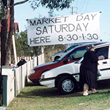| search | feedback | |
| thriving organisations |
|
| governance | |
| planning | |
| evaluation | |
| quality improvement |
|
| evidence based practice |
|
| risk management | |
| writing
policy & organisational manuals |
|
| questionnaires | |
| data analysis | |
| social capital | |
| facilitation | |
| training workshops | |
| ideas & articles | |
| about us | |
| disclaimer | copyright | |
Management |
![]() 1.
Project | 2.
Questions | 3.
Findings | 4.
Pictures
1.
Project | 2.
Questions | 3.
Findings | 4.
Pictures
5. Report & survey forms
Warnervale Districty Community Survey
2. The research questions
Key questions for the research project to answer were:
What is happening to the social capital of these two communities over time? At the level of the whole community. At the level of street communities?
When people move into new release areas how significant is their experience in the social fabric of the communities where people have come from in developing the social fabric of the new community?
Is there evidence that the community development initiatives are making a difference? How much difference? Is it what people living in the community want?
Is there evidence the community development goals have been achieved, ie. reducing fear of crime and increasing the sense of community ownership of children
What are the relative changes in the networks of those directly involved in the community development processes and other people in the community not directly involved? Do the effects of community development processes spread through the community? Or are they limited to those who directly participate?
What community development strategies make the most difference? Where is it worth putting effort?
What are critical factors in how well people become connected into their communities? Eg. Is it stage in life cycle, where people have come from, personal styles, etc?
Is the timing of community development initiatives critical? Are there windows of opportunity which if missed can't be regained?
While it may not be possible to show definitively the cause and effect relationships between the community development processes and change in the social capital it will be possible to describe what happens in the communities and make judgements about the relative impacts of the community development processes.
Strategies
Research strategies included:
- developing an on the ground integrated approach to the research and community development initiatives
- an integrated research design
- focus groups of residents, and staff or others working in organisations within the area
- questionnaires to people in the communities
- interviews of residents and service providers
- participant observation of the area - photos, observations
- mapping organisations and organisational involvement with residents in the area
The Warnervale District
includes the new release areas of Warnervale and Wadalba within the northern
part of Wyong Shire. The area includes the
suburbs:
-
Halloran
-
Hamlyn Terrace
-
Wadalba
-
Wallarah
-
Warnervale
-
Woongarrah
Prior to 1997 there were approximately 200 households in Warnervale and a few in Wadalba. Since 1997 approximately 300 new households per year have moved into the area.
The research project
Th research project is about: exploring the changes
in the fabric of the existing
and new community over time and the connections
between
participation in community events,
activities, group and organisations
and the development
of
community connectedness.
The Warnervale district community survey is an outcome of the Social capital and community development research project which is a longitudinal study begun in 2000 and planned to continue over at least the next decade.
The research is part of the Community Support and Human Services Strategy for Warnervale/Wadalba prepared by the Central Coast Regional Co-ordination Management Group.
The
partners
The partners in
the research project are:
- UnitingCare Burnside Central Coast - Warnervale Family and Community Centre
- Wyong Shire Council
The funding
The research and community development project have been made possible with funding from NSW Attorney-General’s Safer Communities Development Fund , NSW Premier’s Department and the Area Assistance Scheme and Wyong Council.




